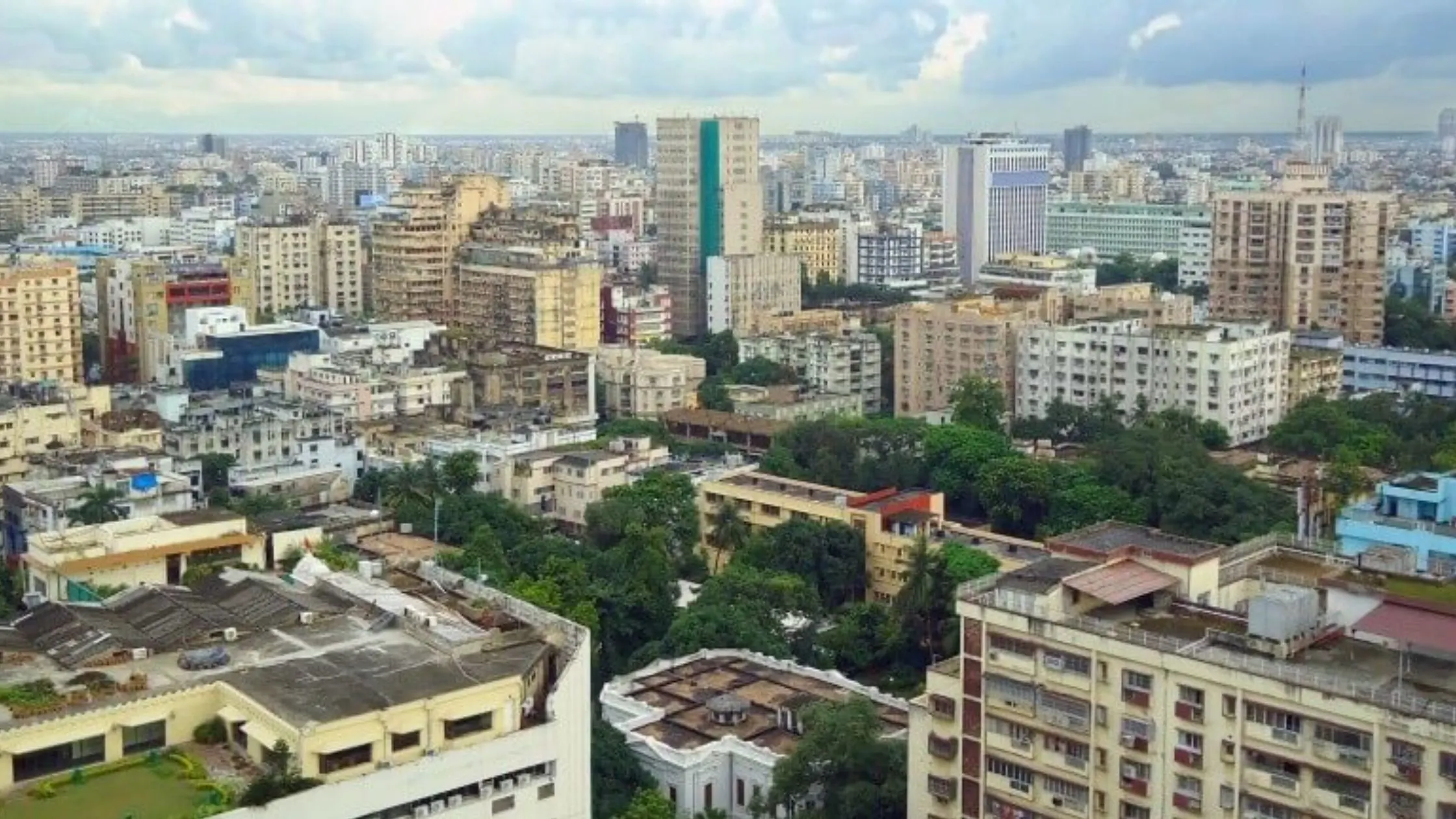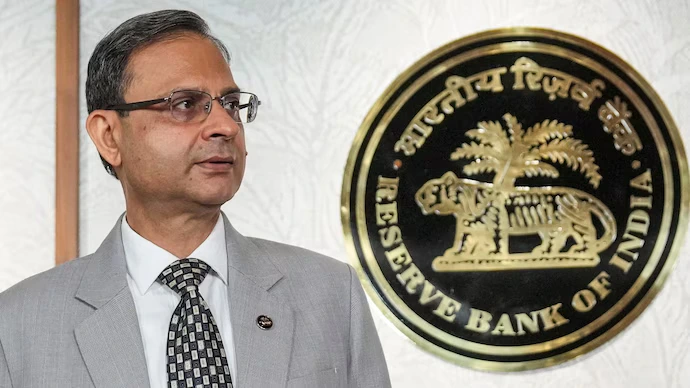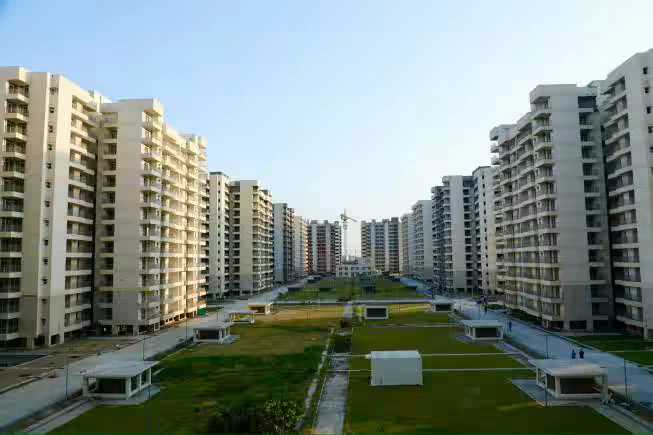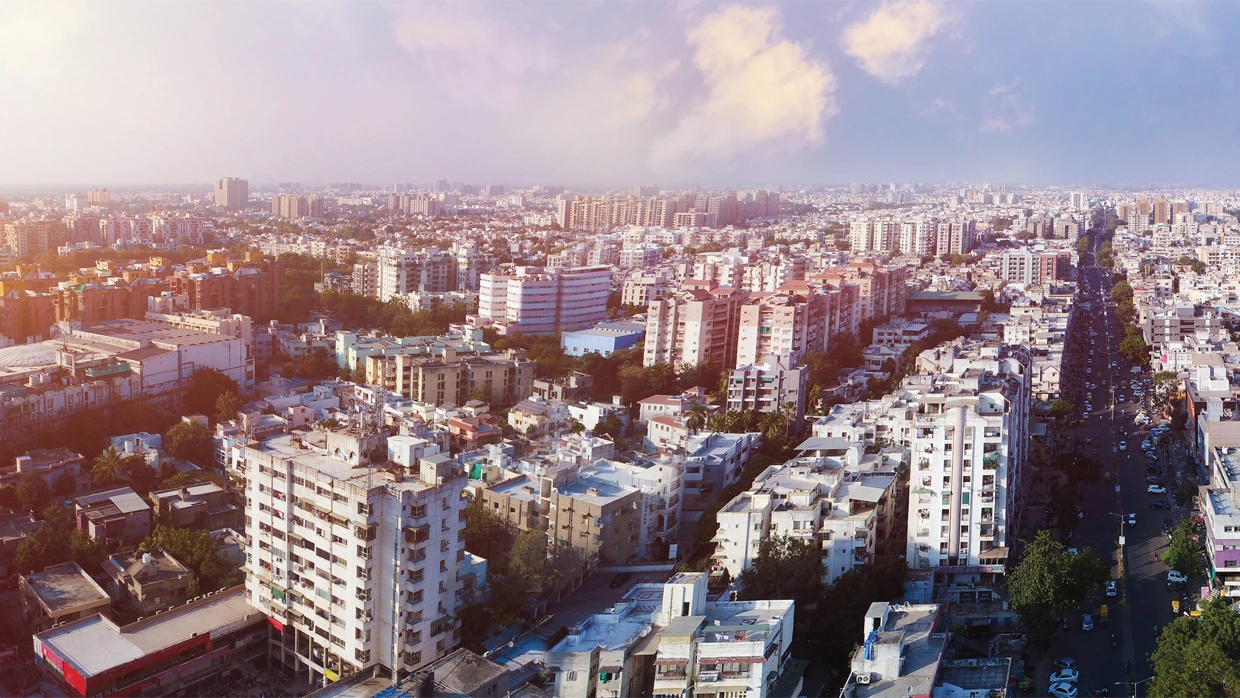Table of Content
- Volume Dips, Value Rises: India’s Market in Transition
- Southern Cities Lead, Western Markets Cool Down
- Premium Segment Outshines Others
- New Launches: Slight Yearly Dip but Sequential Recovery
- Expert Views: From Volume to Value-Driven Growth
- Segment Performance Snapshot
- City-Wise Highlights
- Market Outlook: Cautious but Confident
- Conclusion
India’s housing market saw a mild correction in the July–September 2025 quarter, as housing sales in Q3 2025 across the top eight cities dipped 1% year-on-year (YoY) to 95,547 units, according to a recent PropTiger report.
While western markets like Mumbai Metropolitan Region (MMR) and Pune faced a notable decline, southern metros Hyderabad, Chennai, and Bengaluru continued to power ahead, supported by rising job opportunities and infrastructure growth.
Despite the marginal fall in sales volume, the value of housing transactions rose 14% YoY to ₹1.52 lakh crore, signaling a clear shift toward premium and upper-mid housing segments.
Volume Dips, Value Rises: India’s Market in Transition
The latest data shows a nuanced picture of housing sales in Q3 2025 fewer homes sold, but at significantly higher price points.
Developers and buyers alike are focusing on quality, location, and long-term investment value rather than pure affordability. This marks a maturing phase for India’s real estate cycle, where demand is being driven more by value and aspiration than just necessity.
Analysts note that stable interest rates, strong income growth, and an expanding affluent class have buoyed the premium housing market. Even as overall volumes dipped slightly, most developers reported strong cash flows from high-value transactions.
Also Read: BMC to Sell 426 Inclusive Housing Homes to Go on Sale from Today
Southern Cities Lead, Western Markets Cool Down
Regional performance reflected a sharp divide in housing sales in Q3 2025.
While the southern cities outperformed, western and northern markets slowed due to high base effects and elevated pricing.
- Chennai: +120.9% YoY (7,862 units) – fastest-growing market in the country.
- Hyderabad: +52.7% (17,658 units) – continues to attract tech professionals and investors.
- Bengaluru: +17.6% (13,124 units) – steady end-user demand from IT and services sector.
- Kolkata: +33.4% (3,729 units) – rising traction in the East India corridor.
In contrast, traditional powerhouses saw sharp drops:
- MMR: –22.2% (23,334 units) – market cooling after a strong H1 run.
- Pune: –27.9% (12,990 units) – affordability pressures weigh on buyers.
- Delhi-NCR: –21.2% (7,961 units) – limited supply and high prices slow momentum.
Even with this dip, MMR retained the highest share (24.4%) of total national housing sales, underscoring its continued dominance in value terms.
Premium Segment Outshines Others
While housing sales in Q3 2025 saw a modest 1% decline, the value of sales surged 14% YoY, confirming that buyers are upgrading to larger and more luxurious homes.
The demand for mid-income and premium homes (₹75 lakh – ₹2 crore) remained robust, while the affordable segment (below ₹50 lakh) continued to lag due to cost pressures and limited new supply.
Developers are aligning their launch pipelines accordingly focusing on smaller but higher-value projects in established neighborhoods with strong infrastructure connectivity. This value-led growth strategy has become the defining trend of 2025.
New Launches: Slight Yearly Dip but Sequential Recovery
New housing supply reflected cautious optimism. New launches dropped 5.1% YoY to 91,807 units, but showed a 3.6% quarter-on-quarter increase a sign that developers anticipate demand revival during the festive quarter.
Key city-wise trends in new launches:
- Kolkata: +387.7% (3,469 units) – highest jump in supply.
- Chennai: +105% YoY – strong revival in affordable and mid-range segments.
- Hyderabad: +46.6% (12,530 units) – steady launch momentum.
- Pune: +26.7% (13,543 units) – developers betting on long-term demand.
- Delhi-NCR: –55.7% YoY – significant reduction due to regulatory caution.
- Bengaluru: –57.8% YoY – developers focusing on clearing existing inventory.
Experts say this controlled supply aligns with a “less is more” approach, ensuring demand stability without oversupply risks.
Expert Views: From Volume to Value-Driven Growth
According to Onkar Shetye, Executive Director, Aurum PropTech, “The housing market in 2025 is undergoing a structural shift from a volume-led recovery to a value-driven cycle. End-users are buying fewer but better homes, with emphasis on lifestyle and long-term asset value.”
Analysts agree that housing sales in Q3 2025 indicate market maturity rather than slowdown. Developers with strong brand trust, timely delivery, and premium positioning continue to attract both end-users and investors.
However, the affordable housing segment remains under pressure, highlighting the need for fresh policy support under programs like PMAY-Urban 2.0 to sustain inclusive growth.
Segment Performance Snapshot
|
Segment Type |
Market Share |
Key Trend |
|
Premium Homes (₹1–2 crore+) |
60%+ of total transaction value |
Main growth driver |
|
Mid-Segment (₹50 lakh–₹1 crore) |
Stable |
EMI-sensitive but steady |
|
Affordable Housing (Below ₹50 lakh) |
Shrinking |
Limited supply and cost pressures |
The premium and mid-income categories are now driving both sales and price momentum, supported by favorable buyer sentiment in major metros.
City-Wise Highlights
|
City |
YoY Change |
Units Sold |
Key Insight |
|
MMR |
-22.2% |
23,334 |
Market cooling after record 2024 surge |
|
Pune |
-27.9% |
12,990 |
Demand correction amid rising prices |
|
Delhi-NCR |
-21.2% |
7,961 |
Limited launches, higher ticket sizes |
|
Hyderabad |
+52.7% |
17,658 |
Strong end-user and investor interest |
|
Chennai |
+120.9% |
7,862 |
Fastest growth due to affordability |
|
Bengaluru |
+17.6% |
13,124 |
IT-led stability |
|
Kolkata |
+33.4% |
3,729 |
Growing east India market |
|
Ahmedabad |
— |
Steady absorption |
Emerging tier-1.5 market |
Also Read: MHADA Delays Mumbai Housing Lottery, Next Draw Likely in March 2026
Market Outlook: Cautious but Confident
The overall data from housing sales in Q3 2025 suggests a market recalibration, not a reversal. The slowdown in western metros appears cyclical after two years of rapid growth, while southern cities are emerging as sustainable demand centers.
Analysts expect Q4 2025 (festive quarter) to bring a mild recovery in sales volume as developers roll out festive discounts, and banks offer competitive home loan rates. With inflation under control and job markets stable, demand fundamentals remain intact.
Conclusion
In summary, housing sales in Q3 2025 dipped just 1%, even as transaction values rose sharply a sign of India’s real estate market evolving beyond speculative cycles.
The shift toward premium housing, mature buyers, and value-driven launches marks a new chapter for the sector.
While short-term challenges persist in affordability and regional disparity, the long-term trajectory points toward sustainable, stable, and investor-friendly growth led by India’s southern cities and supported by the country’s expanding urban middle class.







Ans 1. Housing sales across the top eight cities in India fell slightly by 1% year-on-year, totaling 95,547 units. Despite the small decline in volume, the overall value of transactions increased by 14% YoY to ₹1.52 lakh crore, reflecting a growing preference for premium and upper-mid segment homes.
Ans 2. Southern metros led the growth in Q3 2025. Chennai recorded the fastest growth with a 120.9% increase in units sold, Hyderabad saw a 52.7% rise, Bengaluru experienced a 17.6% increase, and Kolkata’s housing market grew by 33.4%. These cities benefited from rising job opportunities, infrastructure development, and strong end-user demand.
Ans 3. The western and northern markets experienced slower growth. MMR reported a 22.2% decline, Pune saw a 27.9% decrease, and Delhi-NCR dropped by 21.2%. These markets faced cooling demand due to high prices, limited new launches, and affordability pressures.
Ans 4. Even though fewer homes were sold, buyers increasingly opted for larger and more premium properties. This shift toward high-value homes, driven by preferences for better quality, location, and long-term investment potential, resulted in a significant 14% increase in the total transaction value.
Ans 5. New housing launches declined slightly by 5.1% year-on-year to 91,807 units. However, there was a 3.6% increase compared to the previous quarter, indicating that developers remain cautiously optimistic about demand recovery, especially in the upcoming festive season.
Ans 6. Kolkata led the surge in new launches with a remarkable 387.7% increase. Chennai’s new supply rose by 105%, Hyderabad saw a 46.6% growth, and Pune recorded a 26.7% increase. These figures reflect developer confidence in specific markets and segments despite overall national moderation.
Ans 7. The premium housing segment, priced above ₹1 crore, accounted for over 60% of the total transaction value and emerged as the main growth driver. Mid-segment homes, priced between ₹50 lakh and ₹1 crore, remained stable with steady demand from EMI-sensitive buyers. Affordable housing below ₹50 lakh continued to face challenges due to limited supply and rising construction costs.
Ans 8. Analysts observe that the Indian housing market in 2025 is moving toward a value-driven cycle. Buyers are purchasing fewer homes but with better quality, modern amenities, and prime locations. This trend emphasizes long-term investment and lifestyle rather than purely fulfilling housing needs.
Ans 9. Southern cities such as Hyderabad, Chennai, and Bengaluru showed strong and sustainable demand due to IT-driven employment and infrastructure improvements. In contrast, western metros like MMR and Pune experienced slower growth after rapid expansion in the first half of the year, while Delhi-NCR faced high prices and limited supply, which constrained transactions.
Ans 10. The market is expected to recover slightly in Q4 2025 during the festive season, supported by developer discounts, competitive home loan rates, and stable employment. Demand is likely to remain concentrated in premium and mid-income housing segments, while affordable housing will continue to face pressure without policy support.